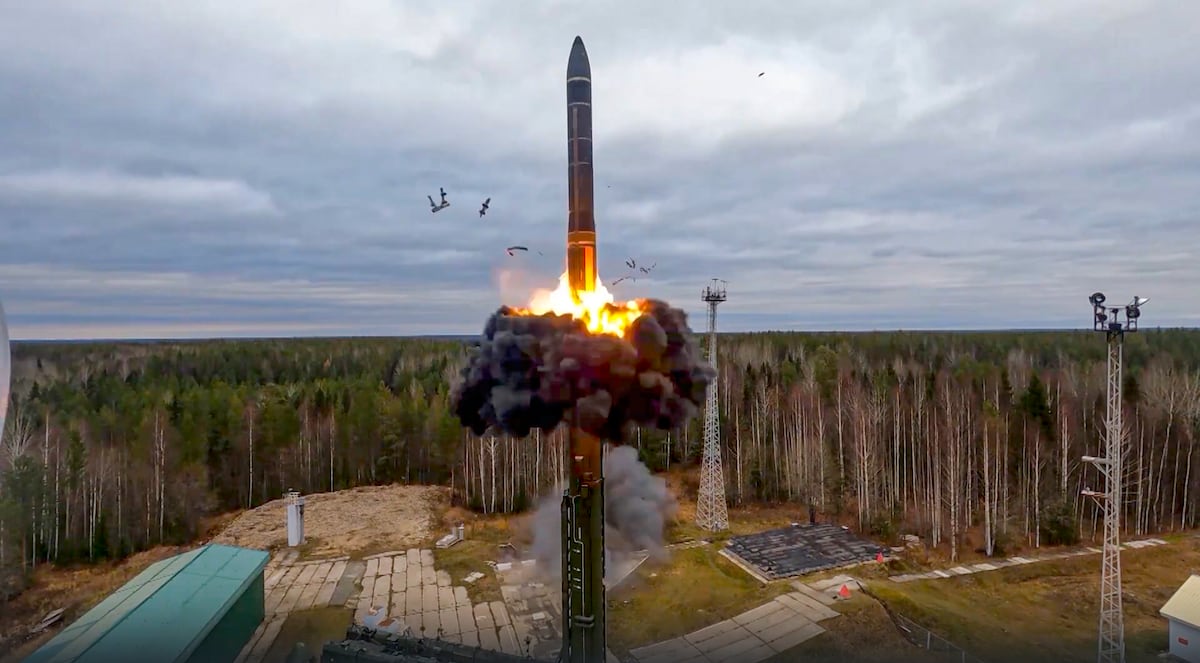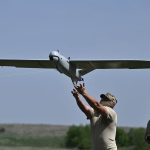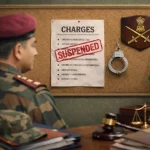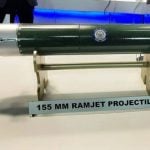Putin Shores Up Nuclear Arsenal Amid Rising Tensions in Ukraine Conflict
This year has seen Russian President Vladimir Putin increasingly invoke the specter of nuclear warfare, a strategy aimed at deterring Western support for Ukraine amidst ongoing geopolitical tensions. Citing Russia’s status as holder of the world’s largest nuclear arsenal, Putin has taken several significant steps, including ordering military drills involving tactical nuclear weapons in conjunction with ally Belarus and announcing plans for the production of ground-based intermediate-range missiles that were previously banned under a historic treaty.
With an estimated nuclear inventory of 5,580 warheads—surpassing the U.S. stockpile of 5,044—Russia’s nuclear might is poised as a counterweight against NATO’s conventional military advantages. The Federation of American Scientists notes that approximately 88% of the world’s nuclear arsenal is comprised of U.S. and Russian stockpiles. Under Putin’s leadership since 2000, Russia has systematically upgraded its nuclear forces, which include a triad of intercontinental ballistic missiles (ICBMs), long-range bombers, and submarines.
Recent developments include the deployment of advanced missile systems such as the heavy, silo-based Sarmat ICBM, colloquially dubbed "Satan II" in the West, and mobile Yars ICBMs, coupling these advancements with a fleet of modernized strategic bombers. Moscow’s battlefield nuclear abilities have also been underscored through high-precision missiles that can be outfitted with conventional or nuclear warheads.
Putin’s latest revisions to Russia’s nuclear doctrine have stirred concern, particularly as they suggest a lowered threshold for using nuclear weapons—now considering conventional attacks supported by nuclear powers as “joint attacks” on Russia. These shifts highlight a more aggressive posture in response to Western arms supplies to Ukraine, suggesting a potential for nuclear escalation should tensions continue to mount.
The 2010 New START treaty, which imposes limits on deployed nuclear warheads and missiles, is set to expire in 2026, with Putin having suspended Russia’s participation earlier this year. Efforts for diplomatic dialogue on arms control have faltered, as tensions between the U.S. and Russia reach historic highs, prompting calls from some Russian hawks to resume nuclear testing—contingent upon U.S. action.
Despite Putin’s rhetoric surrounding modernization and armament, skepticism remains around certain new weapons programs, such as the Burevestnik, a nuclear-powered cruise missile, which has faced technological challenges and safety concerns. The international community remains watchful as these developments unfold against the backdrop of Russia’s ongoing conflict with Ukraine and the shifting landscape of global nuclear strategy.
As the situation evolves, analysts emphasize the critical need for renewed arms control efforts to mitigate the risk of nuclear confrontation and ensure strategic stability.













